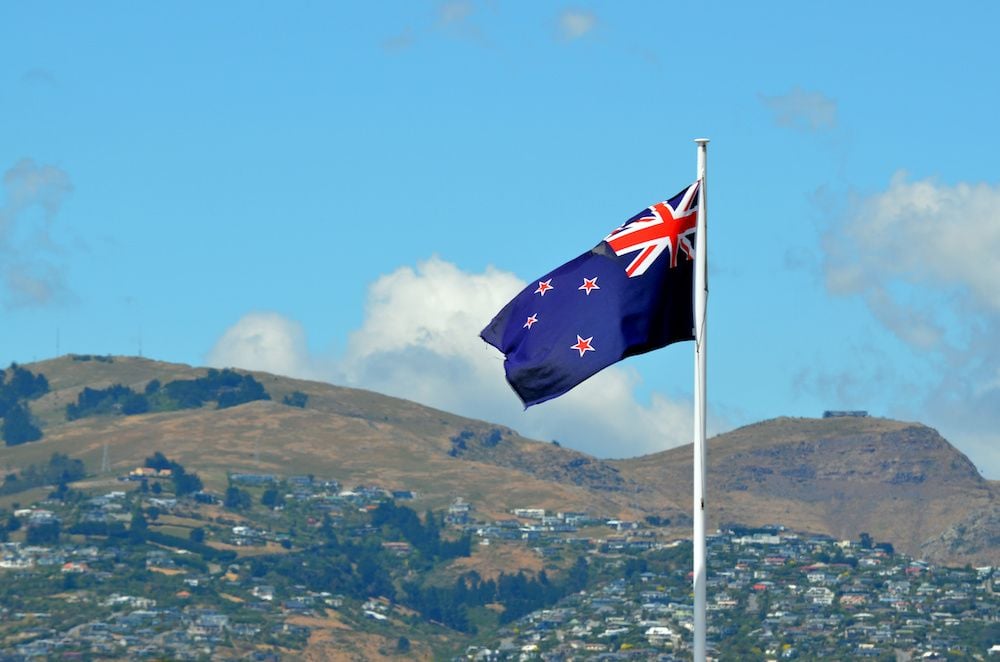The New Zealand Dollar is a Buy says Goldman Sachs
- Written by: James Skinner

Image © Rafael Ben-Ari, Adobe Images
- NZD to outperform EUR in 2019 says Goldman Sachs.
- China will stabilise and the RBNZ could hike, lifting NZD.
- Betting on NZD/EUR cheapest way to trade Kiwi rebound.
The New Zealand Dollar advanced further against rivals in the final session of the week and is likely to continue performing strongly during the months ahead, according to analysts at Goldman Sachs.
Goldman Sachs' analysts are advocating that clients of the bank buy the Antipodean unit ahead of the 2019 year, in anticipation of a recovery in developing world financial markets and a pickup in the Chinese economy.
"Despite strong domestic fundamentals, AUD has weakened in lockstep with other EM assets this year against a backdrop of China slowdown concerns," says Kamakshaya Trivedi, global co-head of foreign exchange at Goldman Sachs, in a report detailing the bank's best trade ideas for next year. "NZD has faced similar headwinds."
Even after a fortnight close to the top of the G10 currency performance table, the Kiwi Dollar has been left nursing what is still a 3.4% loss against the U.S. greenback for 2018, although it's now up 1.2% against a Brexit-stricken Pound.
It's also up 1.5% against the Euro, and buying NZD/EUR is a top trade for 2019 because political risk and European Central Bank (ECB) interest rate policy are likely to "cap" the single currency during the months ahead.
In other words, if the bet does not work out, the downside is lower for those buying NZD/EUR than it might be when trading other Kiwi Dollar pairs.
"We think there is room for a rebound," Trivedi writes. "We recommend funding the trade out of EUR, where a confluence of political risks and growth concerns is likely to cap performance over the next few months and carry is attractive."
It is cheaper to "fund" bets on NZD/EUR than to finance wagers on other Kiwi pairs because the ECB's interest rates are still among the lowest in the world, so investors aren't really forgoing anything by betting against the Euro.
However, the Kiwi has been badly damaged in 2018 by the latest evolution of the global interest rate environment, by President Donald Trump's so-called "trade war" with China.
The Chinese economy is creaking beneath the weight of $250 billion of 10% tariffs on goods exported to the U.S. each year, despite China's efforts to offset the impact with its own retaliatory measures.
"We expect him to raise the tariff rate on the $200bn tranche to 25%, as already scheduled for January, and also view a 10% tariff on the remaining $267bn of imports from China as more likely than not," says Trivedi.
Industrial production, fixed asset investment and GDP growth have all slowed in 2018. Goldman forecasts full-year Chinese GDP growth will slow from 6.9% in 2017 to 6.6% for 2018 and that it decline further to 6.2% in 2019.
However, and despite an anticipated escalation in the trade war early next year, 2019 is seen by Goldman as likely to mark a nadir for Chinese growth.
When this is combined with forecasts for an eagerly-awaited interest rate rise in New Zealand, the outlook for the Kiwi Dollar appears brighter.
"Our forecasts imply a fairly broad-based turn to higher rates across most DM economies, with Sweden, Australia, New Zealand, and (in our baseline forecast) the Euro area joining the US, UK, Canada, and Norway in lifting their policy rates," says Trivedi.
The Reserve Bank of New Zealand (RBNZ) continues to indicate it will hold its cash rate at a record low of 1.75% until well into the 2020 year, while other central banks are working toward "normalising" their rate structures.
In most cases this has reduced the positive yield differential between Kiwi and other government bonds, although the gap between New Zealand yields and those in the U.S. and Canada now tilts firmly against the currency.
In other words there is at best a diminishing incentive, and in some cases a disincentive, for investors to hold Kiwi Dollar fixed income assets over others.
That explains not only 2018's losses, but also why the Kiwi could have scope to outperform next year if and when the RBNZ eventually suggests it is gearing up to raise rates.
The NZD/EUR rate was quoted 0.40% lower at 0.6001 Friday. NZD/USD was up 0.21% at 0.6838 and is currently 3.4% lower for 2018. The Pound-to-Kiwi rate was 0.61% higher at 1.819 and is down 0.84% for 2018.
Advertisement
Bank-beating exchange rates. Get up to 5% more foreign exchange by using a specialist provider to get closer to the real market rate and avoid the gaping spreads charged by your bank when providing currency. Learn more here




